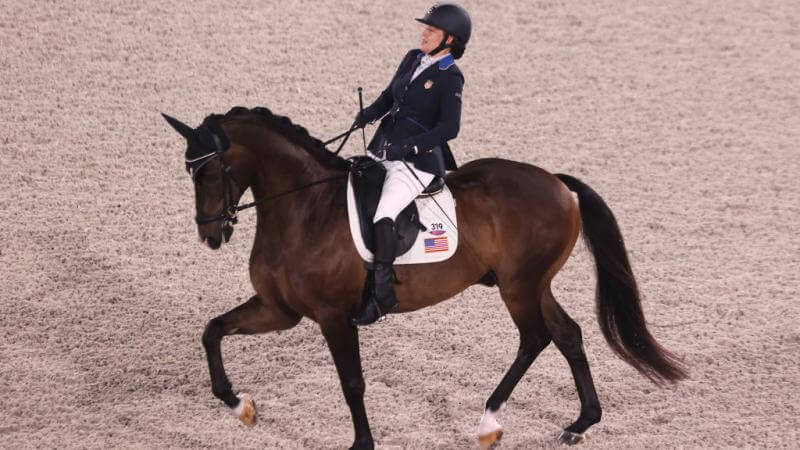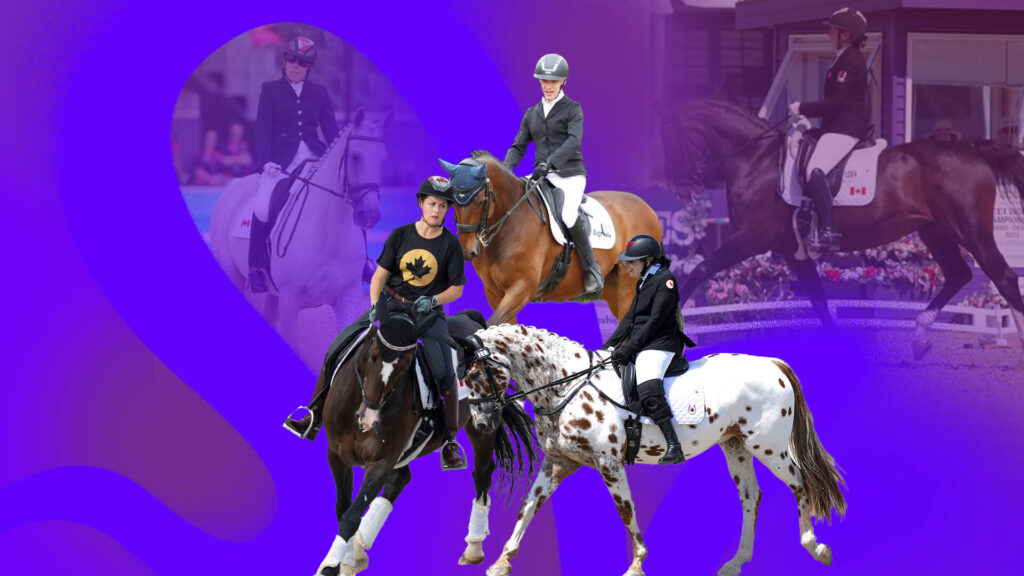Introduction
The 2024 Paralympic Games in Paris captivated the world, and among its most graceful events was Para equestrian, where athletes and their horses performed in perfect harmony at the iconic Château de Versailles.
This sport, often described as “horse ballet,” showcases the remarkable bond between riders with disabilities and their equine partners.
From breathtaking dressage routines to inspiring personal stories, the Equestrian Paralympics 2024 highlighted resilience, artistry, and interspecies connection. In this article, we explore the events, athletes, classification system, and the historic venue that made this competition unforgettable, while answering key questions for enthusiasts and newcomers alike.
What Is Para Equestrian?
Para equestrian is the only artistic sport in the Paralympic Games, focusing on dressage, a discipline where riders guide their horses through precise movements in a choreographed routine.
Unlike Olympic equestrian events that include jumping and eventing, the Paralympics exclusively feature Para dressage, emphasizing harmony, control, and elegance. The sport debuted at the Judy1996 Atlanta Paralympics and has since grown into a global showcase of skill and determination.
- Key Features of Para Equestrian:
- Athletes with physical or visual impairments compete in dressage.
- Horses perform movements like walk, trot, and canter based on the rider’s grade.
- Judged on accuracy, quality, and artistic expression.
The sport is governed by the Fédération Equestre Internationale (FEI), ensuring standardized rules and classifications. At Paris 2024, 76 athletes from 49 nations competed, demonstrating the sport’s growing inclusivity.
The Paris 2024 Para Equestrian Events
The Equestrian Paralympics 2024 took place from September 3 to 7 at the Château de Versailles, a UNESCO World Heritage site. The venue’s majestic gardens provided a stunning backdrop, blending history with modern athleticism. A temporary outdoor arena on the Etoile Royal esplanade hosted 11 medal events across five grades.
Event Structure
The competition comprised three main formats:
- Individual Championship (Grades I–V): Riders performed the FEI Para Grand Prix Test A, a set routine judged on precision and harmony. The top eight in each grade qualified for the freestyle.
- Team Championship: Teams of three athletes, including at least one from Grades I, II, or III, competed in the Grand Prix Test B. Only 15 nations with qualified teams participated.
- Individual Freestyle Championship (Grades I–V): The top eight riders from each grade performed a custom routine set to music, showcasing creativity and skill.
Medal Highlights
Great Britain continued their dominance, adding to their tally of 64 medals since 1996, while the United States made history by breaking Britain’s 20-year team gold streak. Notable performances included:
- Rebecca Hart (USA): Gold in Grade III individual event.
- Fiona Howard (USA): Gold in Grade II individual event.
- Natasha Baker (GBR): Bronze in Grade III, inspired by her toddler son.
The events awarded 33 medals, with athletes judged by five officials positioned around the arena for fairness.
Understanding the Classification System
Para equestrian uses a functional classification system to ensure fair competition. Athletes are divided into five grades based on their mobility, strength, and coordination. The system, overseen by trained classifiers, assesses impairments like limb loss, cerebral palsy, or visual deficiencies.
| Grade | Description | Gaits Performed |
| Grade I | Significant impairment affecting all limbs and trunk; often wheelchair users | Walk only |
| Grade II | Severe impairment affecting sitting position or trunk/limbs | Walk and trot |
| Grade III | Moderate impairment; ability to sit but limited limb function | Walk and trot |
| Grade IV | Milder impairments; good sitting balance | Walk, trot, canter |
| Grade V | Minimal impairments; near able-bodied function | Walk, trot, canter, lateral work |
Aids Allowed: Riders may use adaptive equipment like looped reins, callers to read tests aloud, or “friend” horses to calm their mount.- Eligibility: Athletes submit medical reports to meet minimum impairment criteria, ensuring equitable competition.
This system allows athletes like Heidemarie Dresing (Germany), the oldest competitor at 69, to compete alongside younger athletes like Latvia’s Rihards Snikus, the world’s top-ranked Grade I rider.
The Château de Versailles: A Historic Stage
The choice of Versailles as the venue was no accident. Its equestrian heritage dates back to Louis XIV, who built stables for 2,000 horses. The palace’s gardens, designed by André Le Nôtre, offered a picturesque setting that athletes described as “magical.” Denmark’s Katrine Kristensen noted, “I’ve never ridden in such a beautiful arena. I promised myself to just look up and take it in.”
- Venue Highlights:
- Temporary arena with a capacity for thousands of spectators.
- Horse-themed music, like “A Horse with No Name,” played during breaks.
- UNESCO status underscored the event’s global significance.
The venue’s grandeur amplified the sport’s artistry, making every performance a visual spectacle. Athletes like France’s Chiara Zenati, who earned two silver medals at the 2023 European Championships, aimed to honor their nation on this historic stage.
Standout Athletes and Stories
The 2024 Para equestrian events were as much about personal triumphs as athletic prowess. Athletes balanced physical challenges, professional careers, and family life, inspiring audiences worldwide.
Natasha Baker (Great Britain)
A six-time Paralympic gold medalist, Baker returned post-pregnancy to win bronze in Grade III. Juggling motherhood with training, she blew a kiss to her son Joshua after her performance. “The juggle is real,” she said, highlighting the demands of being both a top athlete and a parent.
Roxanne Trunnell (USA)
A three-time Paralympian, Trunnell secured individual gold in Grade I at Tokyo 2020. In Paris, she and her new mount, Fan Tastico H, scored a career-high 79.375% in the Grand Prix Test B, reinforcing her status as a Grade I powerhouse.
Philippa Johnson-Dwyer (South Africa)
A six-time Paralympian, Johnson-Dwyer overcame cancer and open-heart surgery to compete in Paris. Her journey from Athens 2004 to Paris 2024, including two golds in Beijing 2008, exemplifies resilience.
Sanne Voets (Netherlands)
A three-time Paralympic champion, Voets is known for her creative freestyle routines. For Paris, she collaborated with Dutch artists to craft performances that blended music and movement, earning praise for their emotional depth.
These stories, amplified by media coverage on platforms like NBC and Peacock, showcased the human spirit behind the sport.
The Role of Horses in Para Equestrian

Horses are equal partners in Para equestrian, requiring years of training to respond to subtle rider cues. Breeds like Warmbloods, known for their calm temperament and athleticism, dominate the sport. Riders like Fiona Howard, who debuted with Diamond Dunes in 2024, spend months building trust with their mounts.
- Training Insights:
- Horses undergo daily dressage practice to master movements.
- Riders use adaptive tack to accommodate impairments.
- Veterinary teams ensure equine welfare during competition.
The interspecies bond was a focal point in Paris, with athletes crediting their horses for their success. As US Equestrian’s Carly Weilminster noted, “Graphics showcasing horse and athlete combinations helped fans connect with both partners.”
Media and Global Impact
The Paris 2024 Paralympics saw unprecedented media coverage, with US Equestrian reporting a 965% spike in TikTok viewership. Content featuring behind-the-scenes staff and celebrity moments, like Snoop Dogg’s appearance, generated 22.7 million impressions. This exposure elevated Para equestrian’s visibility, though experts like Dr. Christiana Schallhorn argue the Paralympics still lag behind the Olympics in media attention.
- Engagement Strategies:
- Social media posts on Instagram, X, and TikTok highlighted athlete journeys.
- Shorthand hubs on USEF.org provided in-depth guides to the Games.
- NBC’s 24/7 streaming ensured global access to live events.
This coverage bridged the gap between niche sport and mainstream appeal, drawing in general readers and equestrian enthusiasts alike.
Challenges and Future Outlook
Despite its success, Para equestrian faces challenges like limited funding, accessibility to adaptive equipment, and media disparities. Athletes like Johnson-Dwyer, who self-fund their campaigns, highlight the financial burden. Looking to LA 2028, experts like Hallye Griffin emphasize balancing athlete focus with media opportunities to sustain growth.
- Growth Opportunities:
- Increased sponsorships to support training and travel.
- Expanded classification training for global inclusivity.
- Enhanced media partnerships to rival Olympic coverage.
The sport’s future hinges on amplifying stories of athletes like Rihards Snikus, whose rise from Tokyo silvers to world champion status inspires the next generation.
Conclusion
The Equestrian Paralympics 2024 at Paris was a testament to human and equine partnership, set against the breathtaking Château de Versailles.
From the precision of Grade I walk tests to the artistry of Grade V freestyles, athletes like Natasha Baker, Roxanne Trunnell, and Sanne Voets redefined what’s possible.
The event’s blend of history, athleticism, and emotional storytelling captivated audiences, proving Para equestrian’s place as a Paralympic gem.
For enthusiasts, exploring local federations or watching archived performances on Peacock can deepen your connection to this sport. As we look to LA 2028, Para equestrian promises to inspire even more hearts.
FAQ’s
What is Para equestrian in the Paralympics?
Para equestrian is a dressage-based sport where athletes with physical or visual impairments perform precise movements with their horses. It’s the only artistic sport in the Paralympics, judged on accuracy, quality, and expression.
How are Para equestrian athletes classified?
Athletes are grouped into five grades (I–V) based on their functional abilities, from severe impairments (Grade I, walk only) to minimal impairments (Grade V, walk/trot/canter). Classifiers assess mobility, strength, and coordination.
Where were the 2024 Para equestrian events held?
The events took place at the Château de Versailles, a UNESCO World Heritage site, in a temporary arena on the Etoile Royal esplanade from September 3–7, 2024.
Who won medals in Para equestrian at Paris 2024?
Great Britain led the medal table, followed by the USA, which won team gold. Standout athletes included Rebecca Hart (USA, Grade III gold), Fiona Howard (USA, Grade II gold), and Natasha Baker (GBR, Grade III bronze).
How can I get involved in Para equestrian?
Contact your national or state equestrian federation for eligibility criteria and training programs. Many offer introductory clinics for athletes with impairments.


